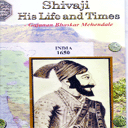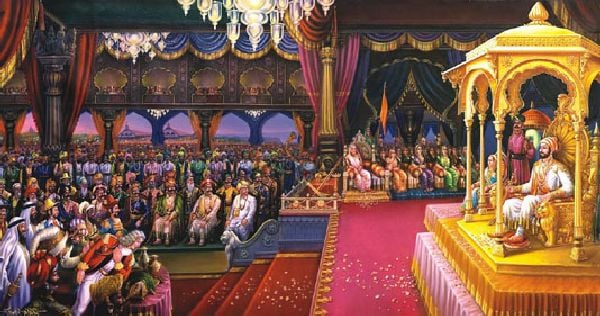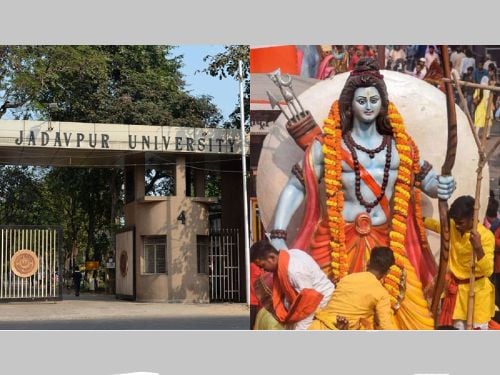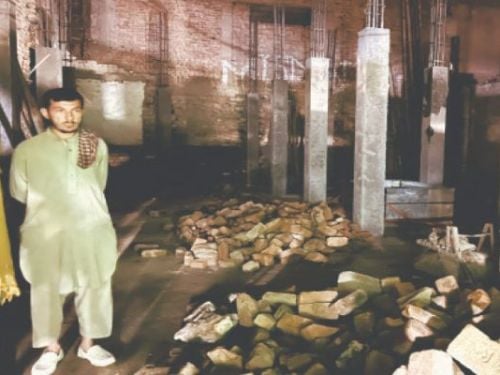The book details not only the life and times of Shivaji but also how he influenced Indian nationalism, says Saradindu Mukherji
 |
Much of the impulses behind the rise of Indian nationalism, the phenomenon of Lokmanya Bal Gangadhar Tilak and fearless Maharashtrian revolutionaries sent to the gallows by the British owe their origins to the Shivaji tradition in Maharashtra. Hence, stalwarts like Bankim Chandra Chatterjee, Rabindranath Tagore, Romesh Chandra Dutta and others were full of admiration for Chhatrapati Shivaji Maharaj. Those were the days when we, fortunately, did not have ‘eminent’ public-sector intellectuals.
Sir Jadunath Sarkar’s observation — that Shivaji (1630-1680) “has proved by his example that the Hindu race can build a nation, found a state, defeat enemies; they can conduct their own defence; they can protect and promote literature and art, commerce and industry; they can maintain navies and ocean-trading fleets of their own, and conduct naval battles on equal terms with foreigners. He taught the modern Hindus to rise to the full stature of their growth” — has the approval of Gajanan Bhaskar Mehendale. In this tome of 934 pages, Shivaji: His Life and Times, the author’s hard work and sincerity is obvious.
 |
A graphic account on the sufferings
 |
of the people and rebellions in Mughal, Qutbshahi and Adilshahi territories is provided. Mehendale observes, “Although Islamic persecution of Hindus lost some of their zeal with their influx into Muslim armies, injustice toward them had by no means abated. Muslims would become charged with doctrinal bigotry when they conquered some new territory — Hindus would be slaughtered, sold into slavery or forcibly converted, their womenfolk would be driven into harems and their temples, either demolished or turned into mosques. Hindus were subjected to untold indignity and religious persecution.”
Mehendale provides a list, though not an exhaustive one, of the temples of Hindus and Jains desecrated, destroyed or converted into mosques by the Islamic rulers. He also recounts many stories of the conversion of Hindus, capture of their women and their forced marriage with their Muslim captors.
“Early Career of Shivaji” is one of the longest chapters in this book. which begins with Shivaji’s birth at the Shivneri fort. Incidentally, his father Shahji worked for the Mughals at that time, which he quit shortly afterwards. At the early age of 12, Shivaji was deputed by his father to administer his mukasas near Pune, and it was this region which became the “cradle of the Swarajya (one’s own state).
Sambhaji, Shivaji’s son, describes in a Sanskrit grant (1680) his father as the “one who had vowed, at the very first blossoming of his youth, to reduce the mlechhas (Muslims)”. Mehendale adds, “Though he was a devout Hindu, was partial to his co-religionists and resented foreign rule, he was not a bigot and never indulged in persecution of Muslims or any other community. In fact, such persecution would not be in consonance with his faith.”
Mehendale does not find anything extraordinary in the influence exerted by his mother, Jijabai, on young Shivaji. Dadaji Kondadeo, the administrator of the mukasas was held in great respect by Shivaji, and so was the revered saint Guru Ramdas (Samarth).
Shivaji began his career of conquest at the age of 18, capturing the forts of Rajgarh, Kondana (renamed Singhagad), Torana and Shirwal. When his father was imprisoned, Shivaji requested the Mughals for his release. He, however, was released without any Mughal intervention.
His humiliation at the Mughal court, his escape from Aurangzeb’s clutches in Agra, his relations with various Mughal-Rajput generals, his increasing influence in the region, Sambhaji’s defection to the Mughal camp (1678) and the return of the prodigal son, his two coronations and assumption of the title of Chhatrapati — all these get detailed coverage in the book.
What comes out clearly is Shivaji’s farsightedness, bravery and diplomatic skill. Mehendale’s convincing logic demolishes the charge that Shivaji was a guerrilla leader, plunderer, etc. The author sums it up: “Shivaji’s political aim was the liberation of India from Muslim rule and the establishment of a Hindu kingdom. But for Shivaji, the entire south would almost certainly have been conquered by Muslims.” Shivaji’s administrative system, revenue management, military set up, war finance, etc, are all discussed. It is tragic that he could live for only 50 years.
On the cultural/literary side, Shivaji used Sanskrit seals, instead of Persian. His official biography, Shivabharat, was written by Parmanand in Sanskrit, and so were Karan Kaustabh and Shivarkodaya. A lexicon commissioned by him Raj-vyavahar-kosh, provided for Sanskrit terms for Persian words.
The book is worth reading by every nation-loving Indian.
The reviewer teaches history at University of Delhi
Source : Daily Pioneer

 Rajasthan: Woman found hanging at a beauty parlour, Arshad, 3 others booked
Rajasthan: Woman found hanging at a beauty parlour, Arshad, 3 others booked Jadavpur Univ revokes permission to celebrate Ram Navami on campus after granting it
Jadavpur Univ revokes permission to celebrate Ram Navami on campus after granting it Andhra Pradesh: Farooq kills mentally challenged Hindu man for insurance money
Andhra Pradesh: Farooq kills mentally challenged Hindu man for insurance money Pakistan: Ancient Hindu temple in Khyber Pakhtunkhwa demolished for commercial complex
Pakistan: Ancient Hindu temple in Khyber Pakhtunkhwa demolished for commercial complex Bihar: Goddess Bhagavati Temple in Araria vandalised and deities damaged
Bihar: Goddess Bhagavati Temple in Araria vandalised and deities damaged Vadodara: Beef supplier Imran Qureshi arrested in beef-stuffed samosa case
Vadodara: Beef supplier Imran Qureshi arrested in beef-stuffed samosa case